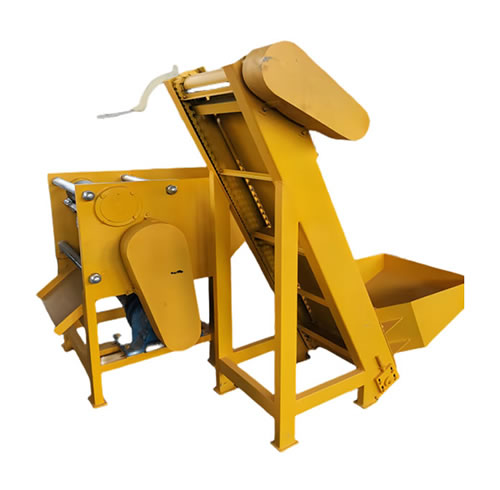Philippines Lithium Battery Discharge Equipment Technology New Progress
Philippines: An emerging market for globally leading industrial products.

The recycling industry chain of lithium iron phosphate batteries includes the following links:
1. **Battery Collection and Dismantling**: This is the first step in the recycling process. It involves collecting used or discarded lithium iron phosphate batteries from various sources, such as electric vehicles, energy storage systems, etc. After collection, the batteries are dismantled to separate different components, including the cathode, anode, electrolyte, and separator.
2. **Battery Testing and Classification**: Before further processing, the disassembled batteries need to be tested and classified. This helps determine their remaining capacity, internal resistance, and other performance parameters. Based on the test results, batteries can be classified into different grades for subsequent treatment, such as direct reuse, remanufacturing, or material recovery.
3. **Direct Reuse or Remanufacturing**: Batteries with relatively high remaining capacity and good performance can be directly reused or remanufactured. For example, they can be reassembled into new battery packs and used in energy storage systems or other applications that require lower energy density and longer cycle life. Remanufacturing may involve replacing some damaged components, such as the electrolyte or separator, to restore the battery's performance.
4. **Material Recovery**: For batteries that are not suitable for direct reuse or remanufacturing, material recovery is the main approach. This involves extracting valuable materials from the battery, such as lithium, iron, phosphorus, and cobalt. The recovered materials can then be used to produce new lithium iron phosphate cathode materials or other related products.
5. **Refining and Purification**: The extracted materials often need to undergo refining and purification processes to meet the requirements of the production of new materials. For example, the recovered lithium needs to be refined to remove impurities and obtain high-purity lithium products. Similarly, the recovered iron and phosphorus also need to be purified to ensure their quality and performance.
6. **Production of New Materials**: The refined and purified materials are then used to produce new lithium iron phosphate cathode materials. These materials are an important part of new batteries and have a significant impact on the performance and safety of the batteries. The production process of new materials needs to be strictly controlled to ensure their quality and consistency.
7. **Application and Marketing of Recycled Products**: The recycled materials or new batteries produced from them need to be marketed and applied. This involves establishing sales channels, promoting products to potential customers, and providing technical support and after-sales service. In addition, it is also necessary to communicate with regulatory agencies and obtain relevant certifications to ensure that the recycled products meet market access standards.
In summary, the recycling industry chain of lithium iron phosphate batteries is complex and multi-link, involving multiple stages from battery collection and dismantling to material recovery and application of recycled products. Each link is closely related and interacts to achieve the efficient recycling and utilization of lithium iron phosphate batteries.

Title: Adaptability Analysis of Lithium Battery Discharge Equipment in Different Regions
Lithium battery discharge equipment plays a crucial role in various applications, and its adaptability to different regions is essential for ensuring optimal performance and reliability. In this analysis, we will examine the key factors that influence the adaptability of lithium battery discharge equipment in different regions.
Firstly, temperature variations significantly impact the performance of lithium batteries. In colder regions, the internal resistance of the battery increases, leading to reduced capacity and shorter lifespan. Conversely, in hotter regions, the risk of overheating and thermal runaway increases. Therefore, discharge equipment must be designed to operate efficiently within the temperature ranges specific to each region.
Secondly, humidity levels also affect the adaptability of the equipment. High humidity can lead to moisture ingress, causing corrosion and short circuits. In humid regions, additional protective measures such as sealed casings and humidity control systems are necessary to ensure the longevity and safety of the equipment.
Furthermore, electrical standards and regulations vary across different regions. The voltage and frequency requirements, as well as safety standards, must be met by the discharge equipment. Compliance with local standards ensures compatibility with the existing power grid and minimizes the risk of electrical hazards.
In conclusion, the adaptability of lithium battery discharge equipment in different regions depends on various factors including temperature, humidity, and electrical standards. Manufacturers need to consider these factors during the design and development process to ensure that the equipment performs optimally and safely in diverse geographical locations. By addressing these regional differences, the reliability and efficiency of lithium battery discharge equipment can be enhanced, contributing to the widespread adoption of clean energy technologies.
Generally speaking the application of lithium battery discharge equipment in the recycling and reuse of lithium iron phosphate batteries in the Philippines is of great significance It can not only improve the production efficiency and quality of enterprises related to the recycling and reuse of lithium iron phosphate batteries in the Philippines reduce production costs but also promote the development of enterprises for the recycling and reuse of lithium iron phosphate batteries However there are also some problems in the application of lithium battery discharge equipment in the recycling and reuse industry of lithium iron phosphate batteries which need further research and solutions In the future with the progress of science and technology the performance of lithium battery discharge equipment will be further improved and its application in the recycling and reuse industry of lithium iron phosphate batteries will also be more extensive Blessings to customers of lithium iron phosphate battery recycling and reuse in the Philippines Thank you for the hard work and unremitting efforts of every member of the team it is the common struggle of everyone that has achieved today's brilliance